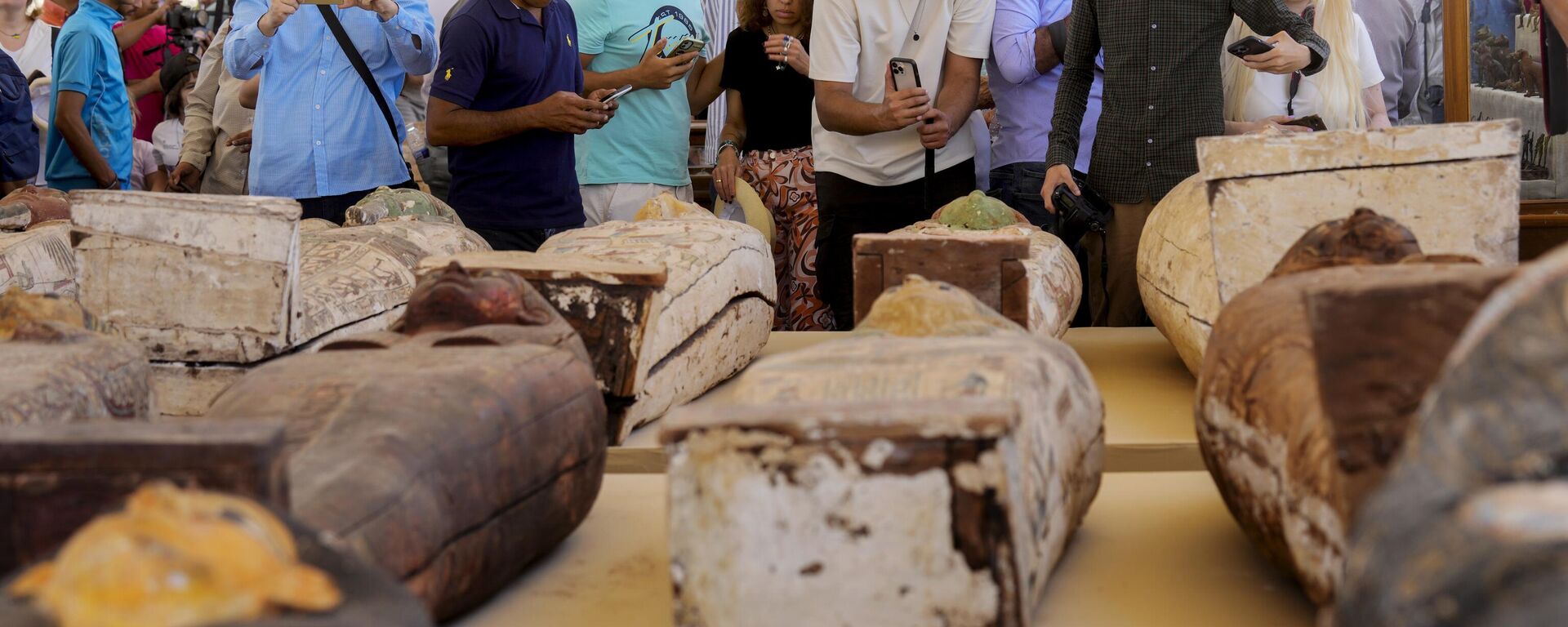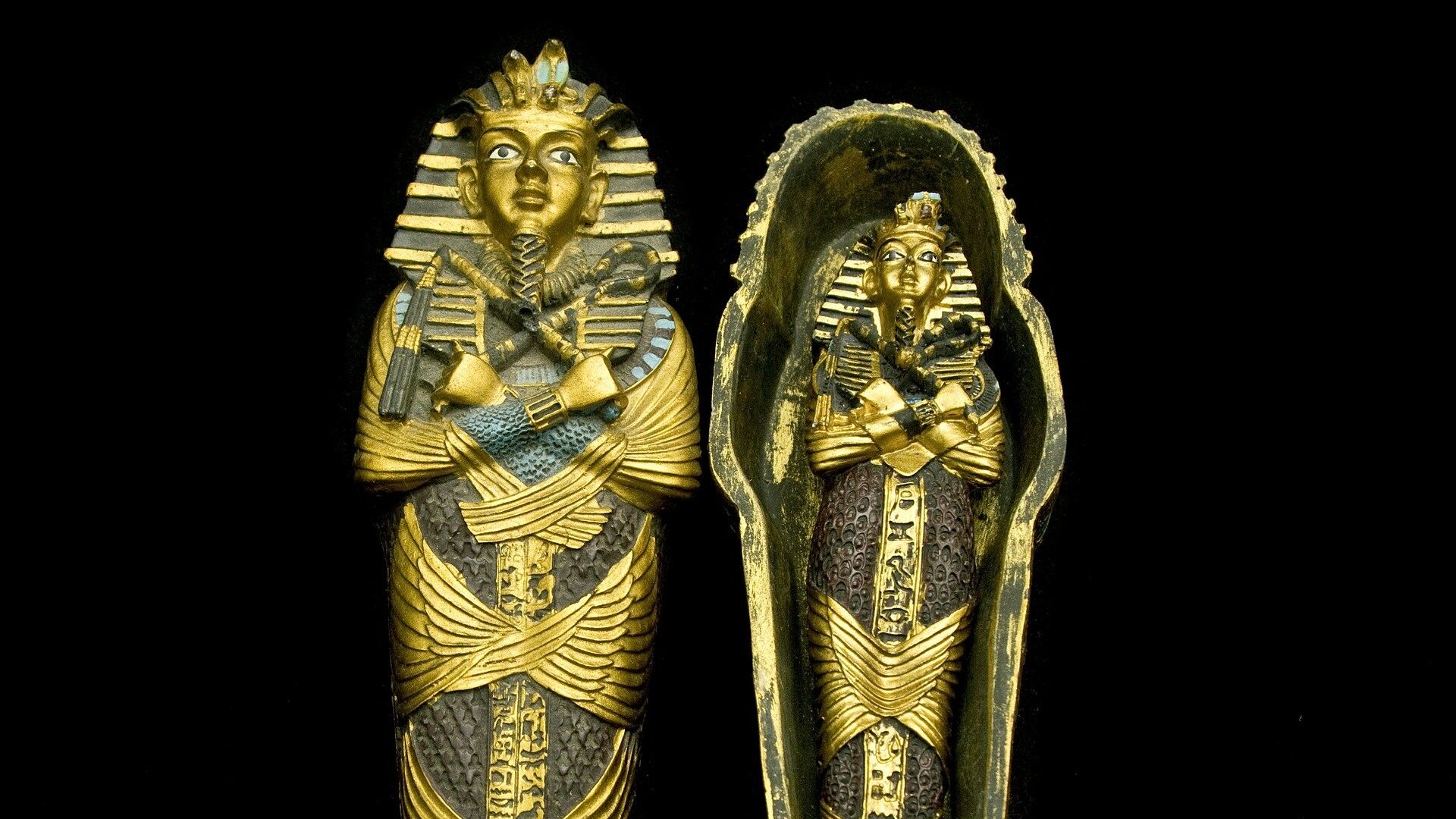https://sputnikglobe.com/20230101/scholar-reveals-how-ancient-egyptians-probably-removed-brains-from-would-be-mummies-1105981007.html
Scholar Reveals How Ancient Egyptians Probably Removed Brains From Would-Be Mummies
Scholar Reveals How Ancient Egyptians Probably Removed Brains From Would-Be Mummies
Sputnik International
The proposed method used for brain extraction apparently involved whisking the contents of an embalmed body's cranium to the point where the brain becomes... 01.01.2023, Sputnik International
2023-01-01T18:45+0000
2023-01-01T18:45+0000
2023-01-01T18:45+0000
science & tech
mummies
embalming
brain
removal
https://cdn1.img.sputnikglobe.com/img/105416/45/1054164572_0:26:1920:1106_1920x0_80_0_0_52dfba10ac1bb9135b4781bda578e532.jpg
Previous assumptions about embalming techniques used by ancient Egyptians have been challenged by Stephen Buckley, an archaeologist and analytical chemist from the University of York. Buckley has offered a new take on the process of extraction of a particular organ from the human body before turning the latter into a mummy.Rather than pulling out chunks of brain matter through the nose by using hooks, as it is generally believed to have occurred, embalmers in ancient Egypt may have resorted to a different method. Buckley has suggested that liquefying the brain would greatly simplify the process.Having conducted a number of experiments on sheep to test how a brain could be extracted, Buckley told one media outlet that “hooking it out in pieces is not particularly efficient/successful," even though the removal could be accomplished through “repeated insertions and removals” of the hook.Instead, he proposed that "liquifying the brain makes the removal of it fairly straightforward," as apparently whisking the brain “for about 20 minutes” results in brain liquidizing so that it could then be simply poured out.He also observed that in some instances, “particularly with the earlier, still quite well-preserved royal mummies,” embalmers left the brains inside the bodies, with that tissue mummifying during the embalming process.
https://sputnikglobe.com/20221210/ireland-to-repatriate-ancient-mummy-to-egypt-in-2023-1105303178.html
Sputnik International
feedback@sputniknews.com
+74956456601
MIA „Rossiya Segodnya“
2023
Sputnik International
feedback@sputniknews.com
+74956456601
MIA „Rossiya Segodnya“
News
en_EN
Sputnik International
feedback@sputniknews.com
+74956456601
MIA „Rossiya Segodnya“
Sputnik International
feedback@sputniknews.com
+74956456601
MIA „Rossiya Segodnya“
science & tech, mummies, embalming, brain, removal
science & tech, mummies, embalming, brain, removal
Scholar Reveals How Ancient Egyptians Probably Removed Brains From Would-Be Mummies
The proposed method used for brain extraction apparently involved whisking the contents of an embalmed body's cranium to the point where the brain becomes liquid and can be simply poured out.
Previous assumptions about embalming techniques used by ancient Egyptians have been challenged by Stephen Buckley, an archaeologist and analytical chemist from the University of York. Buckley has offered a new take on the process of extraction of a particular organ from the human body before turning the latter into a mummy.
Rather than pulling out chunks of brain matter through the nose by using hooks, as it is generally believed to have occurred, embalmers in ancient Egypt may have resorted to a different method. Buckley has suggested that liquefying the brain would greatly simplify the process.
Having conducted a number of experiments on sheep to test how a brain could be extracted, Buckley told one media outlet that “hooking it out in pieces is not particularly efficient/successful," even though the removal could be accomplished through “repeated insertions and removals” of the hook.

10 December 2022, 12:11 GMT
Instead, he proposed that "liquifying the brain makes the removal of it fairly straightforward," as apparently whisking the brain “for about 20 minutes” results in brain liquidizing so that it could then be simply poured out.
"It's not very nice, but that's a much more effective way of removing the brain," the scholar remarked.
He also observed that in some instances, “particularly with the earlier, still quite well-preserved royal mummies,” embalmers left the brains inside the bodies, with that tissue mummifying during the embalming process.


